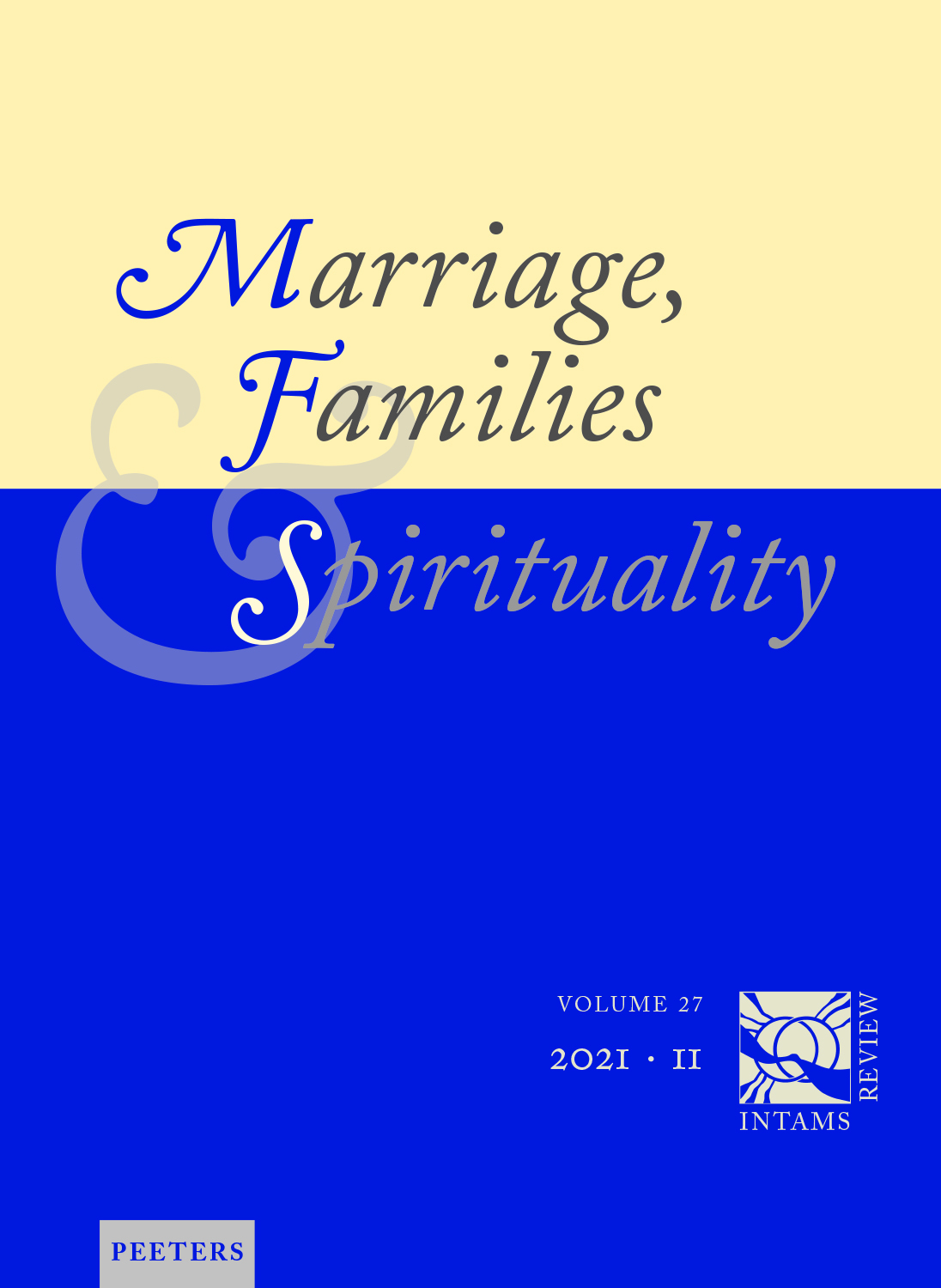 previous article in this issue previous article in this issue | next article in this issue  |

Preview first page |
Document Details : Title: Les multiples aventures du mariage chrétien et de la famille au cours de l'histoire Author(s): ROUCHE, Michel Journal: Marriage, Families & Spirituality Volume: 1 Issue: 1 Date: Autumn 1995 Pages: 53-61 DOI: 10.2143/INT.1.1.2014886 Abstract : The many changes in the concept of christian marriage and family throughout history Manifold concepts of marriage and family can be detected throughout european history. In the Roman Empire marriage is regarded as a civic obligation. It is essential for the continued health of the community and for this reason, the husband has unlimited authority over his house. Divorce, however, is easy to achieve and concubinal relationships are frequent. Against this disordered state of affairs puritanical stoicism pleads for a “marriage of friendship” in which passion is dominated, but it remains widely uninfluential. Emerging christianity defines marriage in terms of a consent. By doing so, it positively refers to Roman law but claims at the same time that the spouses are really free and capable to give such a consent. As a consequence, the average age to be married is raised in these early centuries. This timid progress, however, is quickly wiped out when the Germanic tribes settle in the West. In order to preserve alliances between related clans their marriages are very often endogamic. Love has no part in such arrangements. The Church therefore has a long struggle to gain acceptance for its doctrine of indissoluble and monogamous marriage. Polygamy slowly disappears after the reign of Charlemagne. Only the classical Middle Ages see the triumph of christian marriage in a nuclear exogamic family in which, also, women are relatively well protected. Through the influence of the monks the Church authorities begin to create a new language which is full of respect and esteem for the love between man and woman. With the crisis of Medieval civilisation comes a first setback to the christian concept of marriage. In the time of Renaissance a strong trend of misogyny develops with the return to popularity of writers of Antiquity. The Protestant theologians reject the idea that the union between Christ and the Church is a symbol for christian marriage. In spite of the Tridentine Reforms the Church is finally robbed of its jurisdiction over marriage, but furthermore it also looses its monopoly on the language of love which it has held up till then. In the 18th century conjugal love has begun to acquire a good reputation. But when couples marry for the sake of mere convenience, love is absent. Here the influence of the intellectuals gives rise to a new model, called “free love”, which reaches the common people with the French Revolution at the latest. The logic of freedom in love affairs remains effective, although the 19th century is generally regarded as marked by moral order. This leads to a system of moral double standards with a high rate of divorces. Little by little, a democratisation of love makes it possible to choose one’s partner freely. But while the number of marriages of convenience decreases, the model of freedom in love finds a new expression in the last half of the 20th century. After free love, it is now the freedom of the individual and the pact of honesty, exaggerating the importance of affection as the sole basis for a couple’s relationship. |
|


